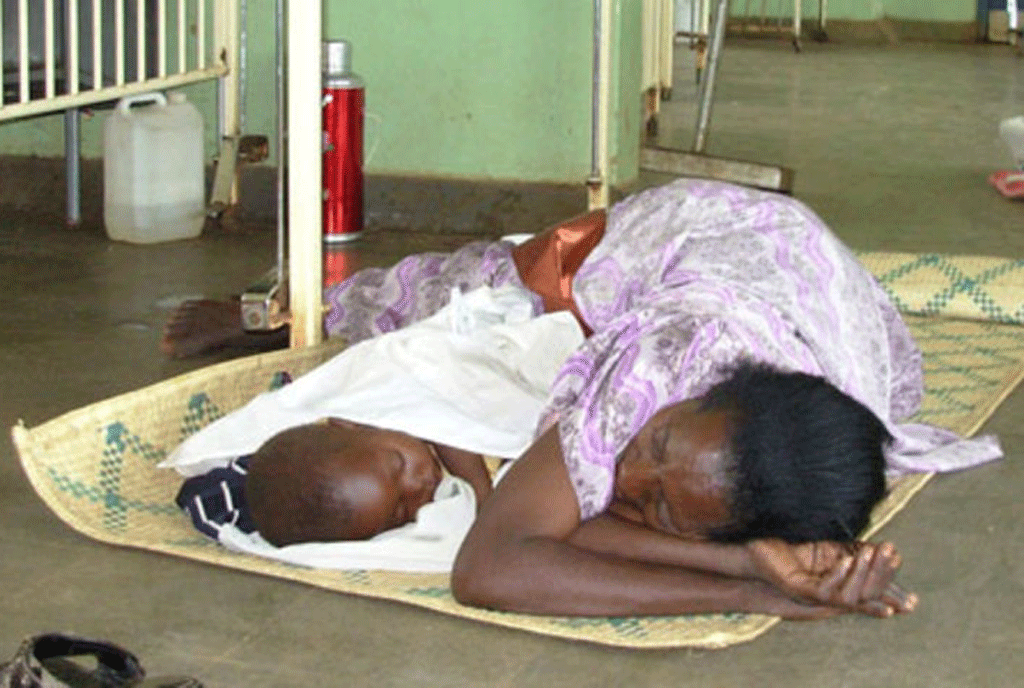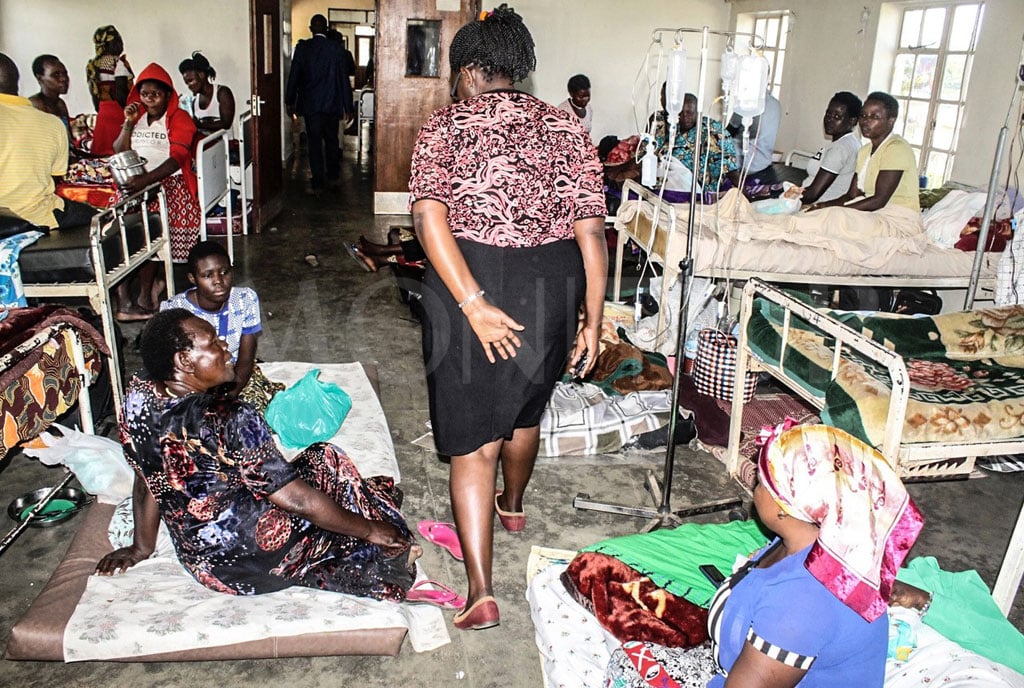Prime
Govt moves to overhaul healthcare system

A patient sleeps with her child on the hospital floor. Many health facilities across the country are poorly facilitated. PHOTO /FILE
What you need to know:
- Under the new arrangement, community hospitals will have more doctors deployed to manage the facilities.
The Ministry of Health has embarked on a programme of restructuring the healthcare delivery system that will transform all health centre IVs across the country into community hospitals.
The restructuring, the ministry says, will improve access to quality health to all Ugandans irrespective of their location.
Dr Diana Atwine, the Permanent Secretary of the Ministry of Health, said the process is already on and by the end of the year, the exercise will be completed.
She said with the increasing population and scope of services offered, the government found it necessary to carry out a complete review and restructuring, which will see all the health centre IVs elevated to community hospitals, with permanent pharmacists deployed.
“The Ministry of Health is in the process of reviewing the whole structure. The population has changed and we have introduced more services. We have also increased the scope of services and so we cannot continue working on the old structure,” Dr Atwine said.
“We are talking about general hospitals in the districts and also health centre IVs. Actually, we are proposing health centre IVs to be transformed into community hospitals and those community hospitals will have pharmacists. We shall also have district pharmacists to coordinate the activities of medicine dispensation and administration,” she added.
The impact
Under the current arrangements, Health Centre IVs are supposed to have at least a doctor and senior clinical officers. However, many of them do not have resident doctors.
Under the new arrangement, the community hospitals will have more doctors deployed to manage the facilities, pharmacists to administer medicine and other specialists. They are also expected to receive more funding to run the community hospitals.
Dr Atwine said a complete overhaul will allow the facilities to respond adequately to the needs of the population.
She said once all the responsible ministries, including the Public Service and Finance agree on the proposed structures, the Ministry of Health will start the implementation immediately.
However, the permanent secretary remained cagey on the cost implications on rolling out the new structure.
Government in the next financial year allocated Shs3.7 trillion for healthcare delivery in the Financial Year 2022/2023.
Ms Atwine said the issue of money should not be a stumbling block and that the restructuring can be effected in phases.
A guideline issued by the Ministry of Health for the management of the healthcare system indicates that health centre IVs provide preventive, promotive, outpatient, curative, maternity, in-patient, laboratory, ultrasound, emergency, blood transfusion, and mortuary services.
The facilities are managed by the district local governments who provide supervision and monitoring of all health activities, including those in the private sector.
During the Budget presentation to Parliament mid this month, the Finance minister, Mr Matia Kasaija, said with the focus on mass vaccination of all eligible persons and community disease surveillance by village health teams (VHTs), additional health assistants and surveillance officers will be recruited to support the VHTs.
He also said the government will rehabilitate Itojo, Kaabong, Abim, Kambuga, Masindi, Kanungu, Kapchorwa, Bugiri, and Amudat general hospitals in the next financial year starting July 1.
“In addition, forty-three (43) Health Centre IIs will be upgraded to health centre IIIs and seventeen (17) new health centre IIIs will be built in the sub-counties without health facilities. Seventy-five (75) staff houses will be built in the Karamoja Sub-region,” Mr Kasaija added.
New funding
Government recently secured a $180.3 million (Shs667.1b) grant from the World Bank to finance the rapid detection, prevention and quick responses to threats posed by the Covid-19 Pandemic.
Officials at the Heath ministry said the grant will strengthen public health preparedness.
FIND OPINION: We need a universal health care system
Dr Pamela Achii, the president of Uganda pharmaceutical society, asked the ministry to speed up the process of recruiting the critical pharmacists so that medicine administration is effectively managed.
“The ministry must start working towards formalising the position of district pharmacists to improve medicine management. This will help with the issue of antimicrobial drug resistance we are experiencing because patients self-medicate for themselves,” she said.
Infrastructure
Data available from the ministry indicates that Uganda has five National Referral Hospitals, including Mulago National Referral Hospital, Butabika National Referral Hospital, China-Uganda Friendship Hospital, Kawempe National Referral Hospital, and Kiruddu National Referral Hospital, 16 Regional Referral Hospitals, and 62 government-owned general hospitals.
The same data also shows that 45.16 percent (3,133) of health facilities are government-owned, 14.44 percent (1,002) private and Not for Profit (PNFP), 40.29 percent (2,795) are Private for Profit (PFP), and 0.10 percent (7) community-owned facilities.




